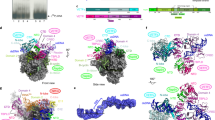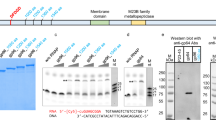Summary
Panhandles are dsRNA structures formed by conserved sequences at the 5′ and 3′ ends of the influenza virus genomic RNA. They consist of two stems separated by a flexible bulge and serve as promoter for the viral polymerase. In the outer stem, melting of base pairs is a prerequisite for initiation of transcription. We compared the terminal sequences of Thogoto virus (THOV), a tick-borne orthomyxovirus, with those of influenza virus. Despite their overall similarity, the first U downstream of the 5′ end of the panhandle (position 3 in influenza virus) is found at position 8 in the THOV sequence. This shift from position 3 to position 8 results in a radical change of the predicted secondary structure. In the outer stem, intra-strand base pairings are clearly favoured above inter-strand hybridizations. As this secondary structure can explain the functioning of a mutant promoter of influenza virus with twice the activity of the wild-type, we propose a general validity of our “hook-like” panhandle structure.
Similar content being viewed by others
Author information
Authors and Affiliations
Additional information
Accepted November 15, 1996 Received September 4, 1996
Rights and permissions
About this article
Cite this article
Weber, F., Haller, O. & Kochs, G. Conserved vRNA end sequences of Thogoto-orthomyxovirus suggest a new panhandle structure. Arch. Virol. 142, 1029–1033 (1997). https://doi.org/10.1007/s007050050138
Published:
Issue Date:
DOI: https://doi.org/10.1007/s007050050138




